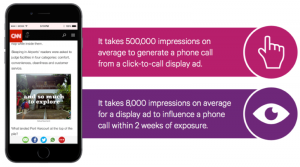— June 24, 2019

Most businesses launch their operations on a shoestring budget and manage the business on readily available technology.
If your business starts in your home, as many do, you probably already have a basic computer, internet connection, and phone service. All you need to do is register a domain name for your website and email, set up a basic website through a web hosting provider and platform, and select an email hosting provider.
Eventually, you start to grow and bring on your first few employees. With employees comes more computers and the need to share information and applications. Great employees expect to have the tools and resources to do their jobs well, and you need to spend your time growing the business not dealing with day-to-day technology challenges.
You may have a friend or colleague help you with your IT needs, but you’re starting to think you need a bit more support than one person can provide. This is usually around the time when a business starts to think about obtaining some sort of professional IT support.
There are a few ways you can go at this point.
Option 1: Hire an Internal IT Person
Pros:
- You have direct control over how employees spend their time.
- Employee time is 100% dedicated to your business.
- You can hand select employees with specific skills and experience with the exact technology tools you utilize.
- An entry- to mid-level IT support person is qualified to troubleshoot basic devices and applications, replace equipment, troubleshoot simple network issues, and add to your software stack.
- The hourly cost of an entry- to mid-level IT support person is less expensive than the hourly rate of most outsourced IT vendors.
Cons:
- Entry- to mid-level technicians are typically not experienced in business leadership and growth. So, they often lack the strategic business skills to offer guidance around scaling and right-sizing your IT solutions to your overall business plan.
- A good Chief Information Officer (CIO) with the unique combination of technical skills and business acumen necessary to drive your technology strategy, earns well into six-figure ranges, which is not a feasible or necessary position in most small businesses.
- Employees take sick days, vacation, and are generally not available at all hours when you need technology working.
- Selecting and managing a technical employee is difficult without technical expertise. This is often an unfair situation for employees early in their careers who need access to coaching and mentoring.
- IT support has a broad range of specialties. Even a great jack-of-all-trades support person requires backup on advanced or complex issues and projects. Plus, IT employees require constant training and professional development to remain current in new technologies that could benefit your business.
An Internal IT Person is a Great Option for:
- Medium-sized businesses with more than 200 employees may have enough work to justify an internal IT support person. However, this model is most effective when paired with one of the outsourced options to fill in skill/knowledge gaps and offer back-up support during peak times.
- Large businesses with more than 500 employees may require a fully-staffed IT department, including their own CIO, helpdesk, and network administrators. However, businesses of this size should conduct a thorough cost-benefit analysis to determine which components of the IT department need to be internal, and which components are more cost effective to outsource.
- Business with unique line-of-business applications and/or equipment often benefit from an internal resource who specializes in that unique equipment or program. For example, even a small manufacturing facility may benefit from an internal resource with specific expertise in maintaining and troubleshooting the applications that run their manufacturing equipment. This is typically the FIRST type of IT person a business needs, as application specialists bring a much different skill set than the systems generalist types of roles that are much more effective to outsource. A few more notes on internal application specialists:
- In addition to specialized knowledge of the application, they act as an internal technology champion by helping employees embrace and fully utilize specific business applications in their specific jobs.
- Applications specialists have the intimacy and tacit knowledge of both the organizational processes and business applications to hone in on necessary application customization and applicable functions.
Option 2: Hire an On-Demand IT Vendor or Freelancer When You Need Them
Pros:
- There are no costs if you don’t call and request support.
- You are not locked into a contract commitment.
- On-demand providers often charge a lower hourly rate than other types of providers, especially in the case of individual freelancers who have significantly less overhead than a mature business.
- You can freely switch between different vendors and/or freelancers based on the skills and experience you require at any given time.
Cons:
- You have no ongoing network monitoring or maintenance, which means you can’t proactively address any issues before they impact the business.
- You most likely don’t have a complete inventory and assessment of the IT tools you’re using, so no one can advise you on upcoming changes in your technology or opportunities to implement more efficient solutions.
- The hourly rate might be less than a different service model, but the time it takes to fix issues may be more since the provider isn’t as familiar with the ins and outs of your unique network set-up.
- There is no guarantee your issue will be fixed if it proves to be too challenging and/or complicated, leaving you with a labor bill and no resolution to your problem.
- Often these types of one-person businesses and freelance professionals lack the necessary insurance to cover errors and omissions.
- You have no Service Level Agreement (SLA), which establishes things like minimum response time, resolution time, and availability. Plus, even if the business or individual carries adequate professional liability insurance, it is difficult to hold the vendor accountable for any undesirable outcome without a contractual agreement establishing expectations.
- You are at the mercy of when the vendor can get to your problem. Even if they have always addressed your issues quickly in the past, you run the risk of coming in second, third, fourth, and so on depending on issues other customers called in ahead of you.
An On-Demand Vendor or Freelancer is a Great Option for:
- Start-ups with limited cash flow and some level of internal IT skills.
- Businesses that can tolerate the possibility of extended downtime waiting on a vendor with no SLA.
- Businesses that do not depend on technology to conduct business and drive revenue.
Option 3: Pre-Purchase Blocks of Support Hours
Pros:
- Pre-purchased hours typically come with an SLA, guaranteeing you minimum hold time, response time, resolution time, etc.
- You typically have the option to add services like monitoring, compliance, backup and disaster recovery, etc.
- Hours are typically flexible, meaning they may be used toward networking projects or day-to-day IT support.
- Most contracts allow unused hours to roll over month-to-month before they expire after a pre-determined period of time.
- By using the same support vendor repeatedly, the company gets to know your infrastructure better over time, which should allow them to troubleshoot faster.
Cons:
- You are billed for hours overages. So, you or someone else who can authorize the use of hours are involved in determining which issues warrant a call to your IT support provider. This means:
- You or another high-level employee are involved in day-to-day IT support.
- End users can’t get up and running as quickly as if they had direct access to support.
- You won’t address seemingly smaller, nuisance issues unless you have hours to use before they expire, reducing productivity as you continue to tolerate the issue.
Blocks of Hours are a Great Option for:
- Large and medium-sized businesses with a more full-staffed IT department. A block of hours can provide backup support during peak-times to a fully-staffed internal IT department, offer after-hours emergency support, provide local “boots on the ground” support to specific locations, etc.
Option 4: Partner with a Managed Service Provider (MSP)
Pros:
- Controlled costs. You are billed a flat monthly fee, typically based on the number of devices or number of users. This offers predictability in IT expenses not offered by other models where costs go up and down based on the number of hours required and skill set of the professional.
- MSPs commit to an SLA, guaranteeing you a minimum response and resolution time.
- Minimizes downtime, as it is in the MSP’s best interest to resolve issues quickly and efficiently (i.e. you don’t pay them for the hours they spend to resolve an issue).
- Your contract guarantees a resolution to issues.
- Typically includes add-ons like network monitoring, compliance, and basic risk mitigation.
- Since any employee can utilize the MSP like your own, internal IT department, you and other high-level employees are removed from day-to-day tech support issues.
- Higher level issues are escalated quickly to tier 3 technicians and engineers because it is costlier to the MSP to allow lower level technicians to continue to work on an issue for longer periods of time.
- Network monitoring alerts are addressed immediately. Since you are not billed by the hour the MSP doesn’t need to wait for you to authorize the use of time.
Cons:
- Equipment costs may seem higher when compared to other available options. MSPs typically install equipment designed to be easily managed and even power cycled remotely. This offers added efficiency and cost savings elsewhere, but something to keep in mind if you are the type to price shop every individual component.
- When an MSP does their job correctly, you may see them less and less over time as they continue to improve your network. This could lead you to feel like you’re paying for service you’re not receiving, but a good MSP is working behind the scenes to keep your network running at maximum efficiency.
- If you have an immediate need for a networking or new equipment project, an MSP will typically not quote the work until they’ve completely onboarded your network and understand the technology in your business. While this may seem frustrating, it’s in your best interest to give them the time they need to confidently stand behind the new installation. This also offers you the opportunity to get to know the quality of the company and support before you are locked into their equipment recommendations. However, it can be a frustrating response if you are trying to complete a project immediately.
Managed Service Providers are a Great Option for:
- Small businesses with 10-200 employees who cannot support their own internal IT department but rely on technology for day-to-day operations.
- Medium-sized businesses with 200-500 employees and have an internal IT resource who specializes in unique equipment and/or specific line-of-business applications.
- Large businesses with an internal IT department that has identified cost savings in outsourcing specific IT department components like network monitoring and administration, data backups and disaster recovery, or helpdesk support.
- Businesses that cannot tolerate downtime and rely on their IT systems to generate revenue.
- Businesses in industries that have specific compliance requirements like healthcare, finance, legal, and other professional services.
- Businesses that rely on sensitive or proprietary information.
Want to learn more about choosing an outsourced IT vendor? Find out what to look for in an outsourced IT vendor or managed service provider.
This post originally published at Innovative, Inc.
Business & Finance Articles on Business 2 Community
(14)







